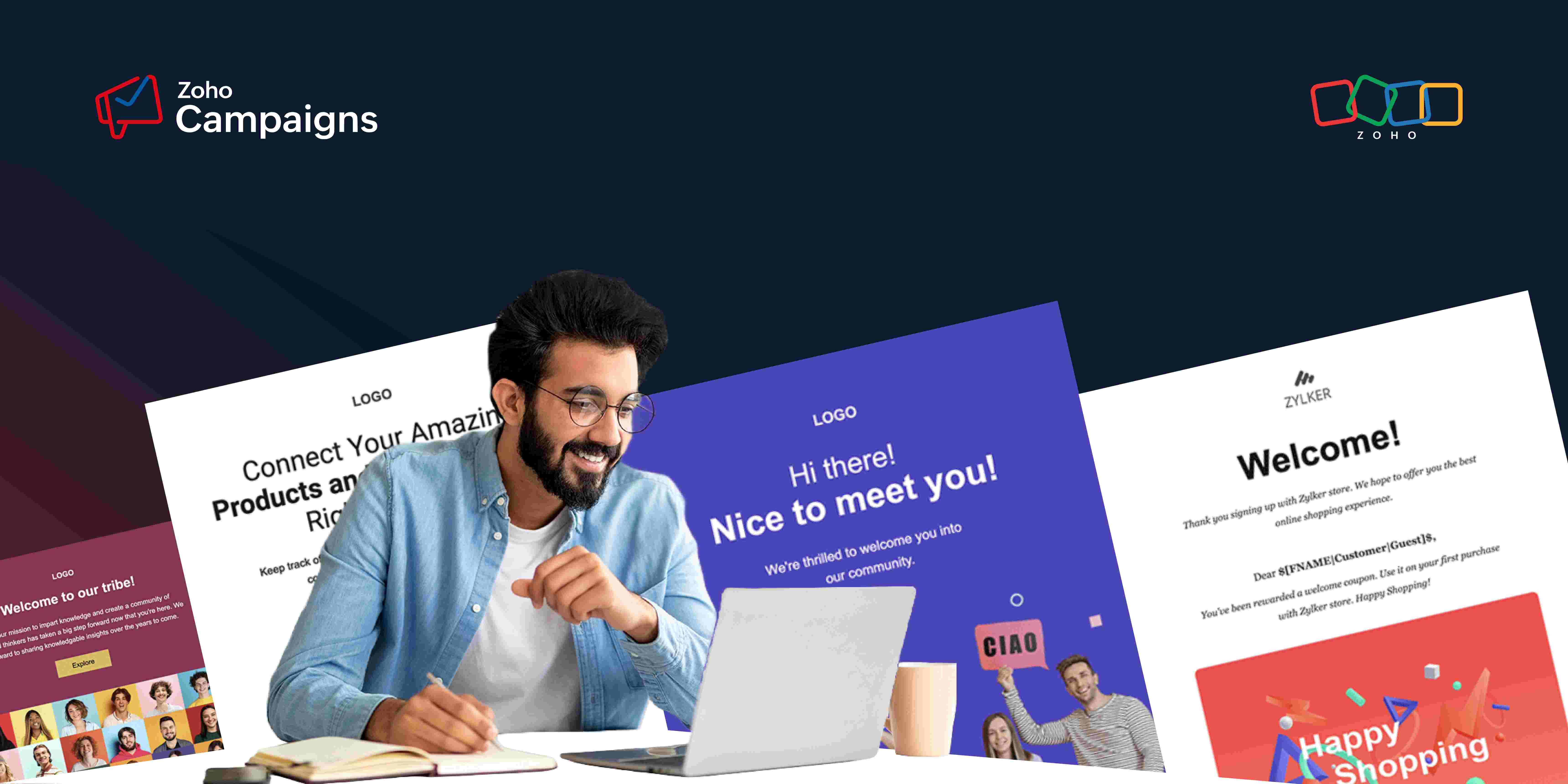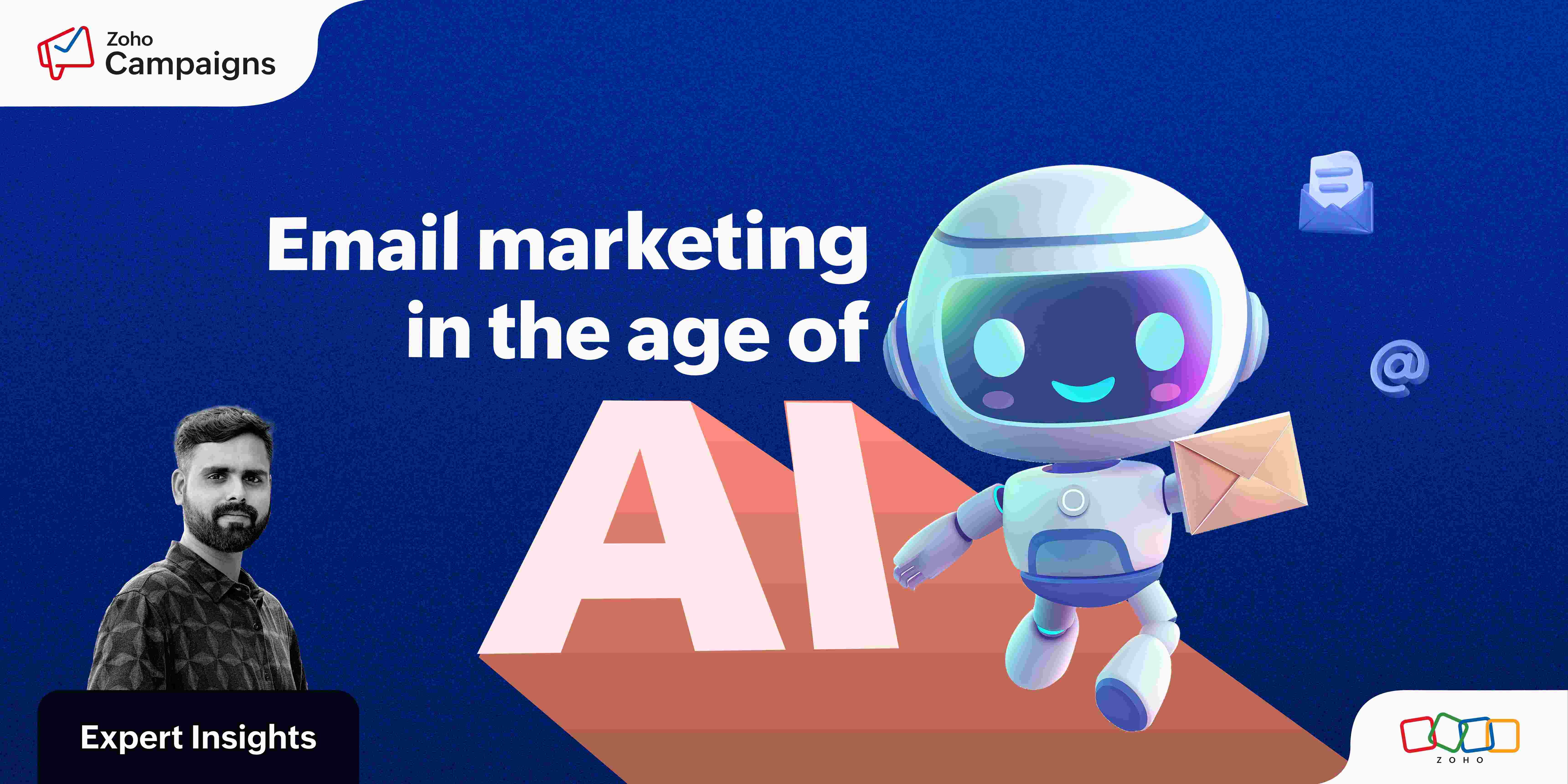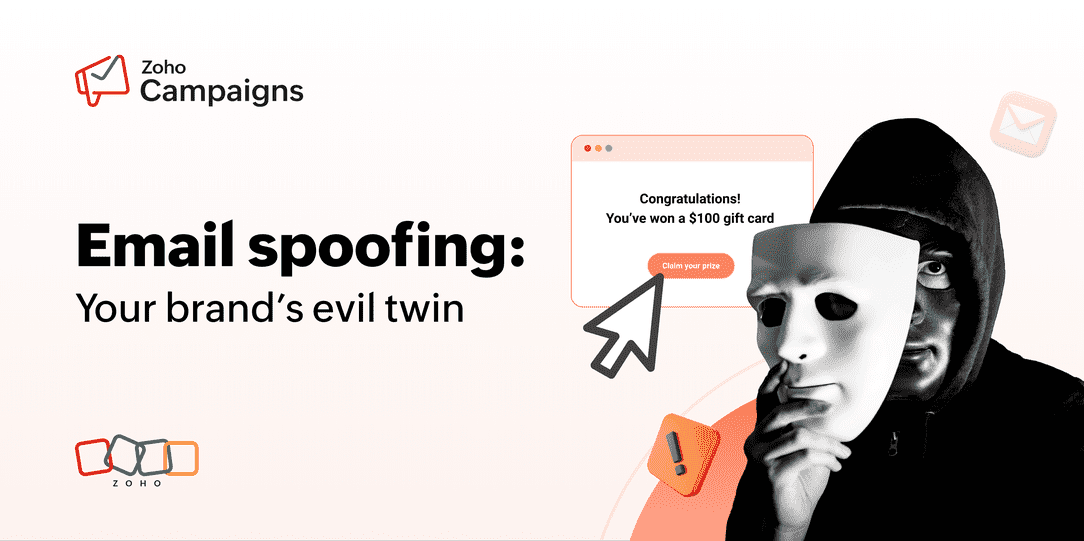- HOME
- Email Marketing
- Effective welcome emails: The art of balancing warmth and strategy
Effective welcome emails: The art of balancing warmth and strategy
- Last Updated : January 8, 2024
- 725 Views
- 6 Min Read

Do you remember the last time you subscribed to a newsletter, joined an online community, or made your first purchase with an e-commerce store? Did you receive a thoughtful and engaging welcome email that left you excited to continue the journey?
At the risk of stating the obvious, engaging and timely welcome emails are non-negotiable and paramount to the success of any email marketing campaign.
Welcome emails are powerful, impactful, highly effective, and are instrumental in driving user engagement.
It's the most important email you'll ever create.
It's your first impression.
It will always be your highest opened email.
It's simply where you begin.
Every element, from the subject line to the sign-off, is crafted to resonate, engage, and inspire action.
What makes a great welcome email?
A great welcome email should effectively combine several key elements that engage the subscriber and set the tone for a positive customer journey. It should be immediate, personalized, useful and have a clear call-to-action.
A great welcome email is more than just a confirmation of subscription. It's a chance to make a strong first impression, get subscribers interested, share what the brand offers, and start building a long-term relationship. It's your high-ticket sales opportunity. Make it count.
What should we include in the welcome email?
1. Subject line:
The subject line for a welcome email is crucial because it’s the first thing subscribers see and determines whether they open the email. Keep it short. Consider adding the subscriber's name or other personalized elements, but keep it all under 50 characters so it's easily readable on all devices. Show your creative might but keep it brief.
2. Sender name:
Use a sender name that aligns with your brand to enhance recognition and increase open rate. Consider using BIMI for better brand recall and trust. Ensure that the sender name is trustworthy and doesn't look like spam or a generic sender.
3. Preheader text:
It appears right after the subject line when the email is previewed in the inbox. It can provide a short summary of the email content, or be a teaser for an enticing offer. It should ideally complement the subject line in terms of content and tone. The aim should be to influence the recipients to open the email.
4. Greeting:
Begin the email with a warm, friendly greeting, preferably personalized.
5. Main content:
Make sure to confirm and acknowledge the confirmation, provide introduction to your brand and set the expectations.
6. Visual elements:
Incorporate brand logos, colors, and imagery to make the email visually appealing and consistent with your brand identity. Consider adding images or videos for a richer experience, but be mindful of the load time and show restraint while adding bulky elements.
7. Call to Action (CTA):
Include a clear and compelling CTA that guides subscribers on what to do next, such as "Shop Now," "Learn More," or "Explore." But make sure not to overwhelm the subscribers with too many calls-to-action in a single mail. Restrict it to one or two at the most!
8. Provide incentives(optional):
Provide special offers, discounts, or exclusive content as a thank-you for subscribing.
9. Social media links:
Include icons or links to your social media profiles to encourage subscribers to connect on multiple platforms.
10. Footer:
Provide your contact details. Include an easy way for subscribers to opt-out if they choose to. Link to your privacy policy to build trust.
The Basic Do's and Don'ts to follow while crafting a welcome email:
Do's
1. Timely communication:
Send the welcome email immediately after the customer subscribes to receive emails. According to a study, 74 per cent of the subscribers expect a welcome email soon after they sign up.
2. Personalization:
Customize the content to make it relevant and engaging for each subscriber, using their name or other personalized elements.
3. Clarity:
Keep the message clear, concise, and easy to read. Avoid jargon and overly complex language.
4. Offer value:
Highlight the benefits of subscribing and offer exclusive content, discounts, or promotions.
5. Include a CTA:
Incorporate a clear and compelling Call to Action (CTA) to encourage subscribers to take the next step.
6. Adhere to laws:
Ensure that you comply with legal requirements like GDPR, CAN-SPAM, etc., including providing an option to unsubscribe.
Don'ts
1. Delay
Don't wait too long to send the welcome email. Timing is crucial to capitalize on the subscriber’s initial interest.
2. Send generic content
Don't send generic, one-size-fits-all content. Tailor the content to fit individual subscriber preferences and behaviors.
3. Overwhelm
Don’t overwhelm the subscriber with too much information or too many CTAs. Keep it simple and focused.
4. Neglect mobile users
Don’t forget about mobile users. Ensure the email is responsive and looks good on all device sizes.
5. Ignore branding
Don’t neglect branding elements. The design and content should be consistent with your brand’s identity and values.
6. Overpromise
Don’t set unrealistic expectations. Be honest and transparent about what subscribers can expect from your emails.
Some incredible stats about welcome emails:
The average email open rate is 19.7%, while the average open rate for welcome emails is 68.6%.
Welcome emails have an average open rate of 50%, which is 86% more effective than standard newsletters.
They generate 4x more opens and 5x more clicks than regular email marketing campaigns.
According to VerticalResponse, welcome emails that are sent within the first hour of a subscriber signing up have the highest open and click-through rates.
Welcome emails that are part of a welcome series of emails are more effective than single welcome emails
Welcome email series
Now that we have mastered the concept of a welcome email, how about taking it a step further and focus on building a welcome email series for your brand? If you have noticed, no brand building stops with just one email. Like how Rome was not built in a day, nurturing relationships takes time, effort and in this case, more emails.
It helps with gradual onboarding. Having a well-thought out welcome email series allows you to provide information and engage with recipients gradually over time. This is valuable if your onboarding process is multi-step or if you want to nurture the relationship. By spreading content and engagement over multiple emails, you increase the likelihood of recipients interacting with your brand. It also gives you the flexibility to design multiple workflows for specific user behaviors or preference and target messaging accordingly.
How many emails should you send?
Let's say someone signs up for your service. It shows that they're interested, maybe even excited. What is the first thing you do? Send a welcome email, of course! But how many should you send? One? Two? More?
Well, the golden rule here is: one primary welcome email, right off the bat. It’s where you say, "Hey, thanks for joining us! Here's what you need to know." Make it warm, make it friendly, and make it count.
Now, some like to go with a series, say two or three emails, spaced out over the next week or so. The idea? Don't bombard them, but keep the conversation going. Maybe the second email dives a bit deeper into your product, and the third could be a nudge about something cool they might not have tried yet.
Your goal should be to spread out messaging and keep it interesting. Show them why sticking with you is a great choice. Find that sweet spot to keep them engaged without overwhelming them.
Expertspeak: Tips to write the better welcome emails
We are sharing a few nuggets of wisdom shared by email marketing experts and copywriting geniuses on social media.
"The first email of your welcome sequence is THE most opened email you'll ever send your audience. Slide a link to your high-ticket offer in there."
"If you ask them to do too many things at once, it is most likely they will do none of them. Remember, keep it light."
"The most important email sequence you'll create: The Welcome Sequence
It's your first impression. Your highest opened. Sets up the relationship. Go all out for it:. Share how you'll help your reader, Share your story, Plug your 'appetizer offer'
Great welcomes = $$$"
"To leverage your best-performing emails…Add them to the end of your welcome sequence. The customer sees your business continuing to support post-purchase.
Conclusion
In short, a welcome email is an "invitation" to let the new subscriber into a world where their needs, preferences, and desires are acknowledged, valued, and met with utmost precision and care. Get it right and reap success.



